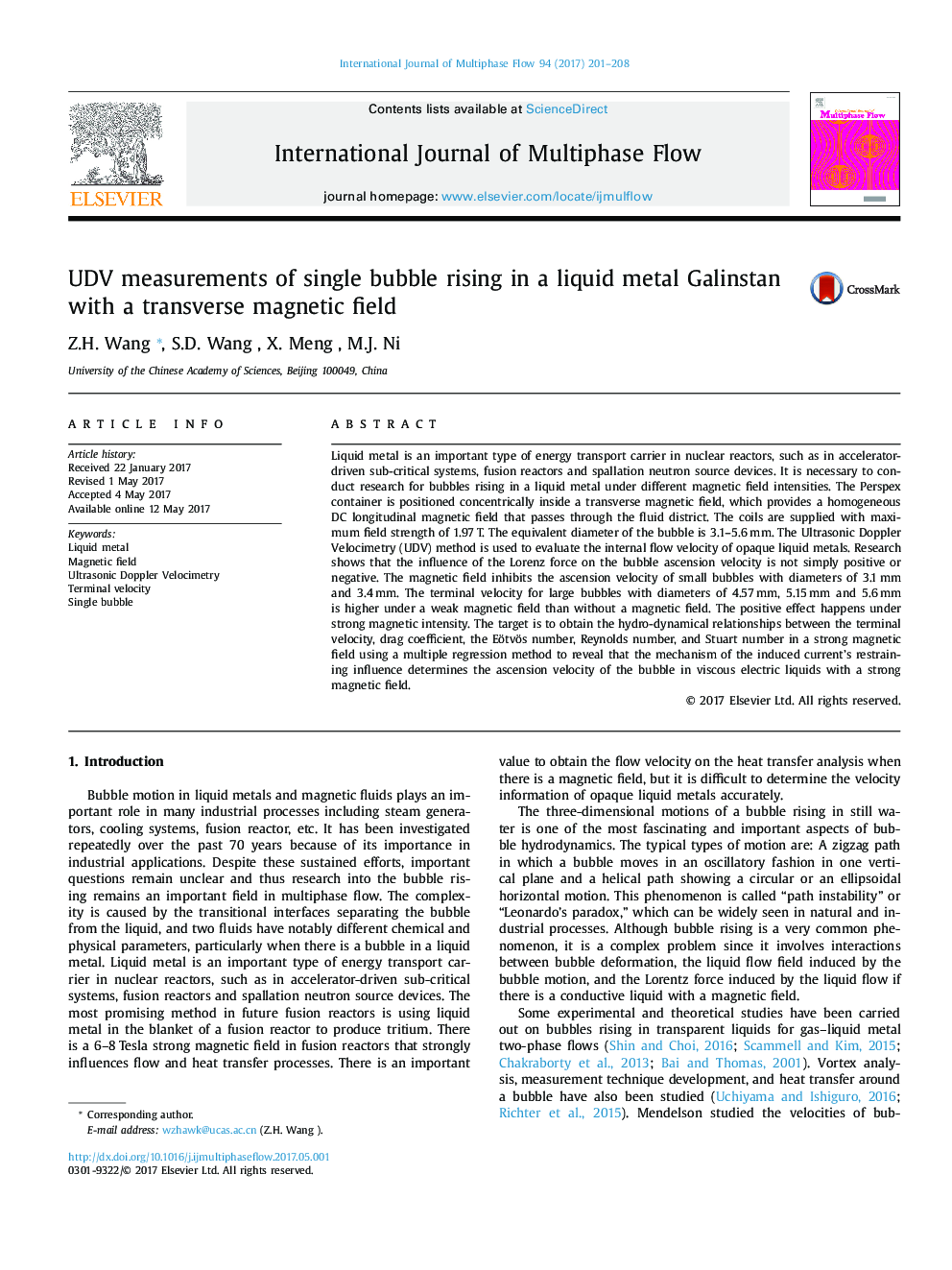| Article ID | Journal | Published Year | Pages | File Type |
|---|---|---|---|---|
| 4994900 | International Journal of Multiphase Flow | 2017 | 8 Pages |
Abstract
Liquid metal is an important type of energy transport carrier in nuclear reactors, such as in accelerator-driven sub-critical systems, fusion reactors and spallation neutron source devices. It is necessary to conduct research for bubbles rising in a liquid metal under different magnetic field intensities. The Perspex container is positioned concentrically inside a transverse magnetic field, which provides a homogeneous DC longitudinal magnetic field that passes through the fluid district. The coils are supplied with maximum field strength of 1.97Â T. The equivalent diameter of the bubble is 3.1-5.6Â mm. The Ultrasonic Doppler Velocimetry (UDV) method is used to evaluate the internal flow velocity of opaque liquid metals. Research shows that the influence of the Lorenz force on the bubble ascension velocity is not simply positive or negative. The magnetic field inhibits the ascension velocity of small bubbles with diameters of 3.1Â mm and 3.4Â mm. The terminal velocity for large bubbles with diameters of 4.57Â mm, 5.15Â mm and 5.6Â mm is higher under a weak magnetic field than without a magnetic field. The positive effect happens under strong magnetic intensity. The target is to obtain the hydro-dynamical relationships between the terminal velocity, drag coefficient, the Eötvös number, Reynolds number, and Stuart number in a strong magnetic field using a multiple regression method to reveal that the mechanism of the induced current's restraining influence determines the ascension velocity of the bubble in viscous electric liquids with a strong magnetic field.
Related Topics
Physical Sciences and Engineering
Chemical Engineering
Fluid Flow and Transfer Processes
Authors
Wang Z.H., Wang S.D., Meng X., Ni M.J.,
